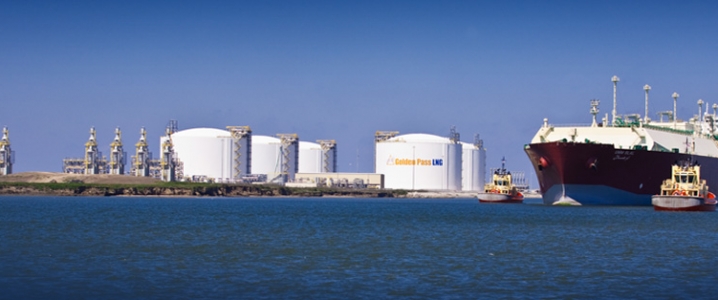
Natural gas flows into the three liquefaction and export plants on the U.S. Gulf Coast have begun to increase once again after a brief interruption prompted by adverse weather in the Gulf.
Reuters data shows that after falling to a year’s low earlier this week, at 1.5 billion cu ft daily, flows are back to rising at the Sabine Pass LNG plant operated by Cheniere Energy and Cove Point, property of Dominion Energy. The only exception was Cheniere’s Corpus Christi facility, where, according to data provider Genscape, gas volumes dropped to virtually zero this month. The reason is yet unclear but it is not atypical for new LNG plants to suspend operations temporarily soon after launching.
Natural gas flows into the country’s three operating liquefaction and export plants hit a record 5.5 billion cu ft a day in January, so the drop was indeed quite substantial. The implications are that weather conditions—which in the last few weeks on the Gulf coast included “Heavy fog, high winds and rough seas,” according to an IHS Markit analyst—are having the same effect on the LNG industry as they are having on the oil industry in the Gulf, and future interruptions are always a possibility.
There is, however, no way around this. LNG plants cannot be built inland—at least not profitably—so a risk of disruptions will just need to be factored in by the operators, whose number just increased by two: Exxon and Qatar petroleum decided to go ahead with a planned US$10-billion expansion of their joint Golden Pass LNG import plant. The expansion will add a liquefaction and export terminal to the facility, raising the number of operating LNG export terminals in the United States to four.
As demand for liquefied natural gas continues to rise globally, more capacity will be coming on stream in the world’s largest natural gas producer. In a December 2018 report the Energy Information Administration said it expected the country’s LNG export capacity to double by the end of this year to 8.9 billion cu ft daily. This will make the U.S. the third-largest exporter of LNG in terms of capacity after Qatar and Australia.
Of these, two are planned to start operating before long: Sempra Energy’s Cameron LNG in Louisiana, and Freeport LNG, with a capacity of 13.9 million tons per year, in Texas. Sempra is currently starting up the 12-million-ton-per-year facility after the Federal Energy Regulatory Commission (FERC) gave it the go-ahead, and hopes the plant will begin operation by the end of the year. Freeport LNG, as per a Reuters report from 2018, should launch by September this year, although delays are always a possibility with LNG projects.
Then there’s one more project that could begin operation by the end of 2019, and this is the Elba Island LNG plant in Georgia. The Houston Chronicle earlier this week reported that operator Kinder Morgan had begun the startup process, like Sempra, after getting the green light from FERC. Elba Island is different from regular LNG plants in that it consists of 10 modular liquefaction facilities, with a total capacity of 2.5 million tons per year.
U.S. LNG exports are expected to increase from about 3 billion cu ft daily to about 17 billion cu ft by 2030.
